Ants in remote continental islands
In the article, soon to be published, “Sampling insects at remote and threatened regions: The ants (Hymenoptera, Formicidae) of Cordillera del Cóndor, Ecuador, South America”, Adrian Troya, Jefferson Salazar, Luis Espinoza, Vladimir Carvajal, and Patricio Yánez examine the ant fauna of a sub-Andean mountain range in northwestern South America which is considered among the least biologically studied regions of the continent. Sub-Andean cordilleras, located in the interaction of the main Andean chain and the Amazon, are considered “continental islands” which host a diverse and endemic biota. However, this biodiversity “hotspot” is currently in jeopardy primarily due to large-scale mining and forest clearings. In this paper, the authors will show an annotated list of 165 species of ants along with comments on their biology and ecology with a focus on the genus level. Here, Adrian shares some amazing pictures.
A Photoblog contribution by Adrian Troya
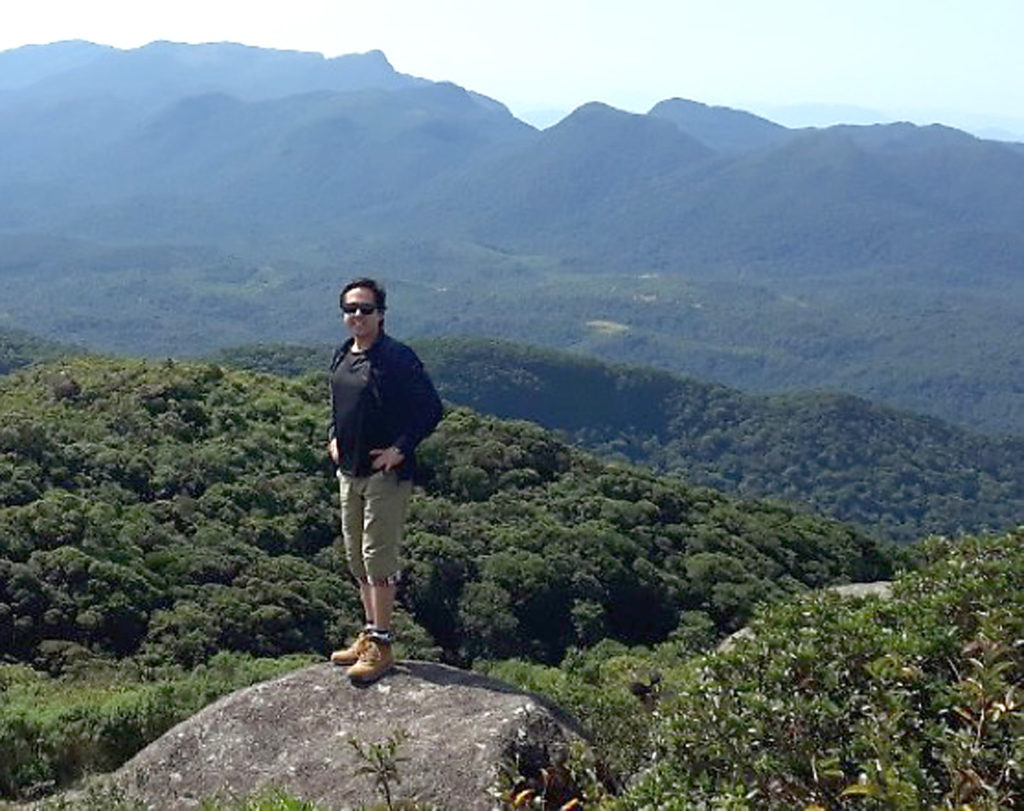
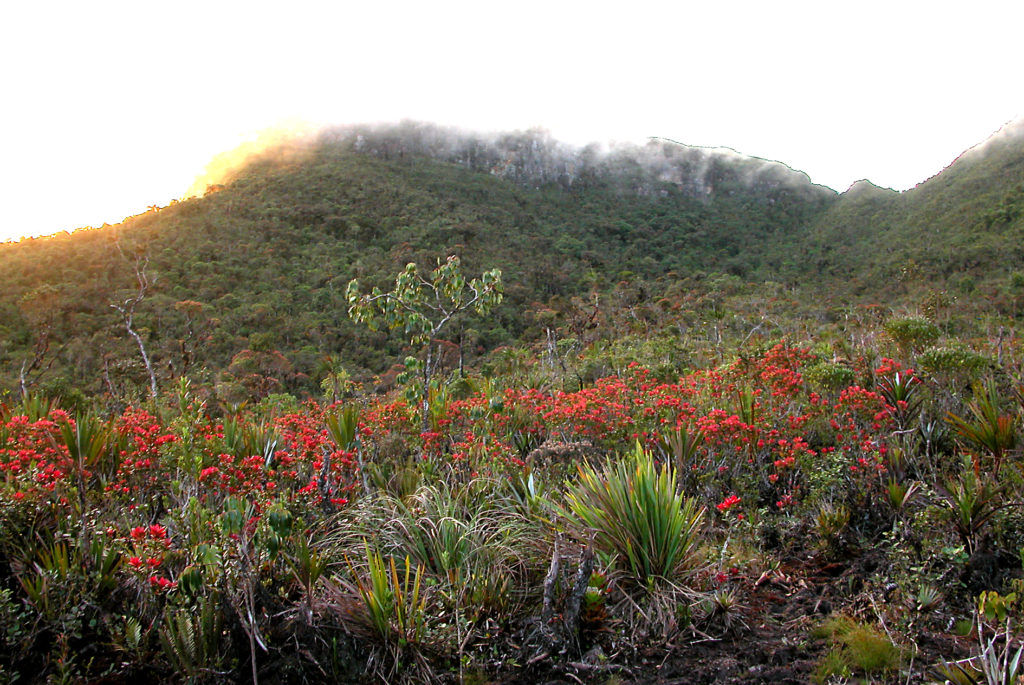
At the interplay of the north-eastern Andean slopes and western Amazonia emerges a series of low-elevation mountain ranges, stretching around 2000 km from the Cordillera de la Macarena in Colombia to the Cordillera Azul in central Peru. Pristine and virtually unexplored mountain forests spread across the range. Cordillera del Cóndor, along the southern political border between Ecuador and Peru, is amongst the largest of these intermittent chains which are separated from the main Andean axis by scarped river valleys and steeped hills which challenge even skilled hikers. The sub-Andean cordilleras also referred to as Andean tepuis (due to the biotic and geologic similarity to the tepuis of the Guianas in north-eastern South America) are rich in endemic taxa, especially plants, marsupials, and anurans. As a prelude to our coming paper about the ants of Cordillera del Cóndor, I would like to briefly share to the community some results and related notes on our field campaigns to certain locations of this majestic natural environment. We have been working on this article for some years now and finally it seems it will come to light. Through this study, we hope to raise awareness on urgently required new governmental policies for stricter regulations of large-scale mining projects in Ecuador. These are not only threatening the biota and indigenous ancestral settlements located in this region. Additional mining projects are menacing many other fragile ecosystems within the country.
One of our initial expeditions began at a remote site called Paquisha, very close to the Ecuadorian-Peruvian border, some 18 km SE from the town of Yantzaza, Zamora Chinchipe province. Left picture: The field crew of zoologists and assistants just before initiating the ascent to the tepuis on the Paquisha plateau. The aim was carrying out a rapid biological assessment of the region, including the entomofauna with a focus on ants and dung-beetles. Right picture: Field assistants not only aided in carrying our equipment up to the hill but also collaborated in our daily tasks (see pictures below). Cordillera del Cóndor is a mineral-rich region and in the past, several locations became the battleground between Ecuadorian and Peruvian armies. Yet, even in times of peace, the Ecuadorian army maintains surveillance points such as the small rustic wood-made structure located midway in the trail heading to our collection site.
Left picture: The table-top at Paquisha with tepui-like vegetation at around 2300 m. We turned the small, red-roofed house (centre of the photo) to our operational base for a few days. Down the hill lie the tropical mountain rainforests, here occluded by a dense cloudy layer. Right picture: The political border between Ecuador and Peru is revealed by the mountain edge some 100 m above the plateau. Epiphytes and bromeliads are abundant in the rocky cliffs, probably hosting unusual insect taxa. Definitely, a microhabitat worth checking for ants. Sandstone plateaus like these in Paquisha are considered homologues to those of the Guiana Shield. Table tops at Cordillera del Cóndor are geologically younger and smaller, however. Certain plant genera once thought to occur only on the former, such as Dendrothrix, have been found in recent years also at El Cóndor, thus showing patterns of unusual disjunctivity. In our study, we recorded various species that also inhabit a number of regions along the Guiana Shield, for example, Anochetus bispinosus, Crematogaster sotobosque, Neoponera unidentata. Yet, these species occur in other Central and South American bioregions, as well. There is still no convincing evidence for a disjunct distribution of ant genera between the tepuis of the Guiana and those of the sub-Andean cordilleras. Further ant sampling may prove otherwise.
Left picture: Field assistants help to install pitfall traps to capture some of the ground-dwelling myrmecofauna, as for example, Acromyrmex cf. aspersus (right picture) which we collected at two sites: Paquisha and Colibrí. Besides this record, we only collected two more attines: Apterostigma turgidum, and Cyphomyrmex kirbyi. Perhaps biotic conditions in some sites of El Cóndor are not especially suitable for populations of fungus-growing ants to develop their colonies. Another potential (and simpler) explanation may lie in the collecting methodology which could be biased, since, for example, we could not provide deeper attention to the litter and underground biota. Since several habitats in the sub-Andean cordilleras have demonstrated high species richness in plants, we anticipate the discovery of additional attine taxa in future sampling events
Left picture: Though generally highly criticised, canopy knockdown resulted in a very effective sampling technique by means of which we obtained a major proportion of our ant specimens during the biological survey. For around 30 seconds I sprayed a biodegradable insecticide (permethrin) to the canopy strata. Only five to ten “fogging stations” were selected for sampling. However, due to the spiny dense vegetation present, we could not apply this technique at certain sites. Individuals of the predatory ant Neoponera aenescens (right picture) were usually found in the canopy strata, though in much fewer numbers than other arboreal species like Camponotus aff. cheesmanae or Crematogaster aff. acuta (left and right pictures below).
Left picture: A major worker of the arboreal Camponotus aff. cheesmanae collected through canopy fogging at two sites of El Cóndor. Though this species is morphologically similar to C. cheemanae, recorded only for Gorgona island in Colombia, it is surely genetically distant to the latter as judged by the relative isolation of island-like ecosystems in these ranges. Many sites of the sub-Andean cordilleras, particularly those formed by sedimentary sandstones and limestones, are biotically differentiated from the adjacent mountainous Andean cloud forests and the tropical lowland Amazonian forests. The Andean tepuis may harbour peculiar and usually endemic organisms like the shrew opossum (Caenolestes condorensis), a marsupial that has only been found at the tabletop of El Quimi (also known as Achupallas) so far. We included this site, to the north of the Cordillera, in our sampling agenda. Right picture: Crematogaster aff. acuta, another potentially arboreal species found at three sites: Colibrí, El Zarza, and El Zarza-Fruta del Norte, located in the centre of the Cordillera.
The two sides of a natural wonder: Fruta del Norte. Among the marvels of Cordillera del Condor, the region known as Fruta del Norte is perhaps the most famous in the Ecuadorian part of this mountain range. Top pictures show still undisturbed forests in this area. A contrasting situation is exemplified in the other two pictures showing mining camps and roads which are expected to extend in the future. This region got international attention due to large mineral deposits, namely gold, silver, and copper, which were discovered during the early 2000s. Sadly, the exploitation of this hidden mineral richness will likely jeopardize the preservation of threatened species, some of which are only found in this remote site of the world. Regarding the ant fauna, we still know little about potential endemic species. We know though, that certain unidentified specimens may be good candidates, as those shown below.
We failed to determine the species identity of various ants, most of which we consider as being potential new to science. Some of these may prove to be endemic, either to Cordillera del Cóndor or may be found exclusively in the tropical Andes in northern South America. We collected only two specimens of the cryptobiotic dweller Octostruma sp. (left picture) at Colibrí, a wet rainy forest with a taller and more diverse vegetation as compared to the plateaus. Colibrí is a mere 2.5 Km north of Fruta del Norte. This species could well have a reduced distribution in the Neotropics, and we know nothing about its ways of life. Right picture: An unidentified Anochetus, probably close to A. inca, for which there is only a single collection record by C. Townsend in the early 1900s in Jaén, Peru, a geologically similar sub-Andean region.






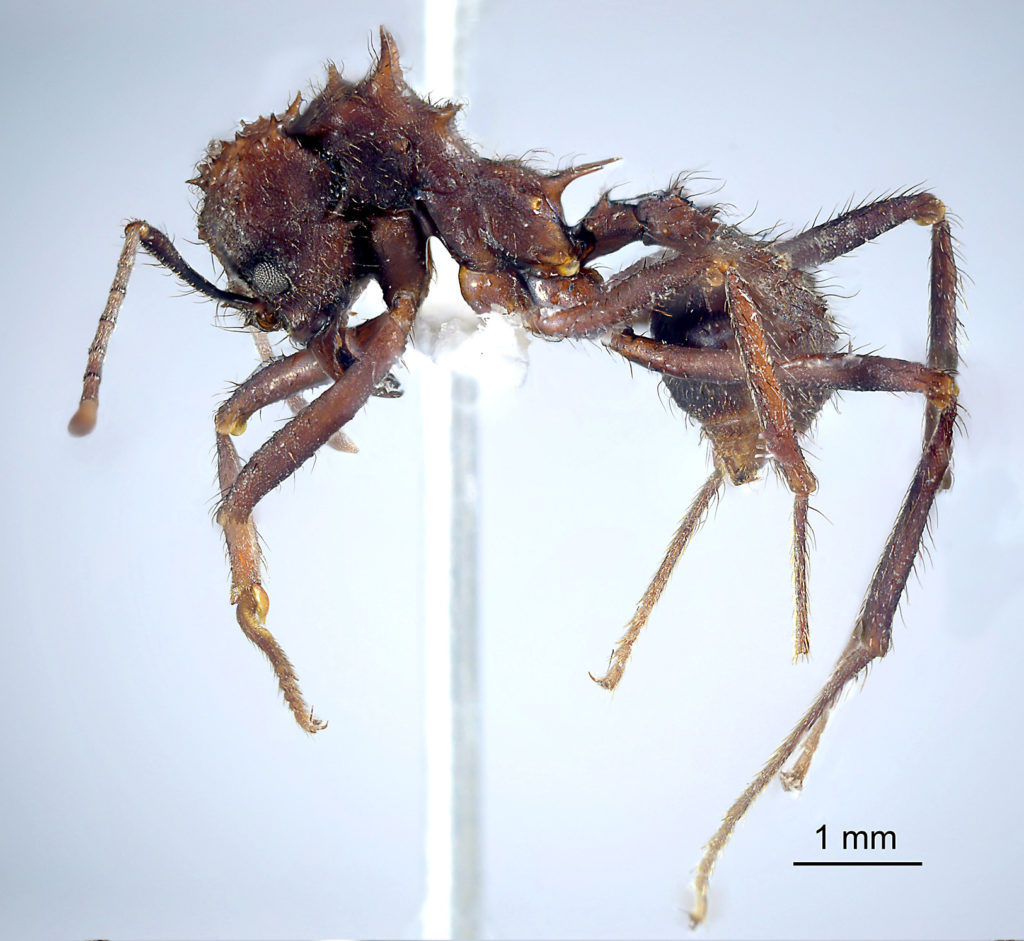
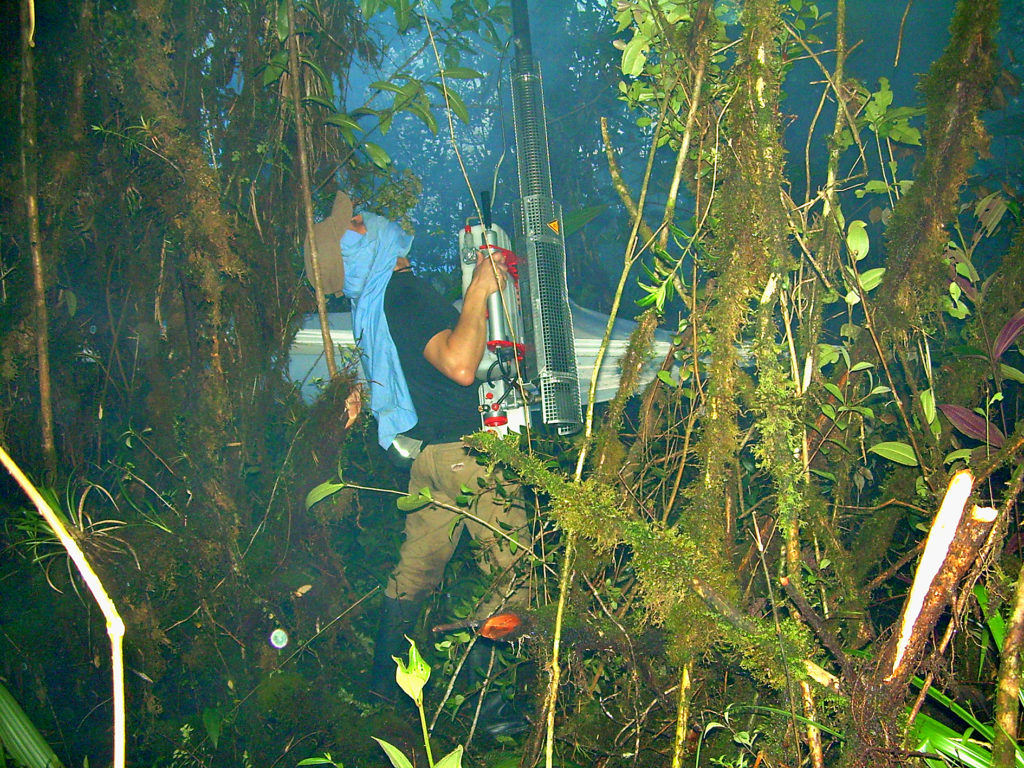
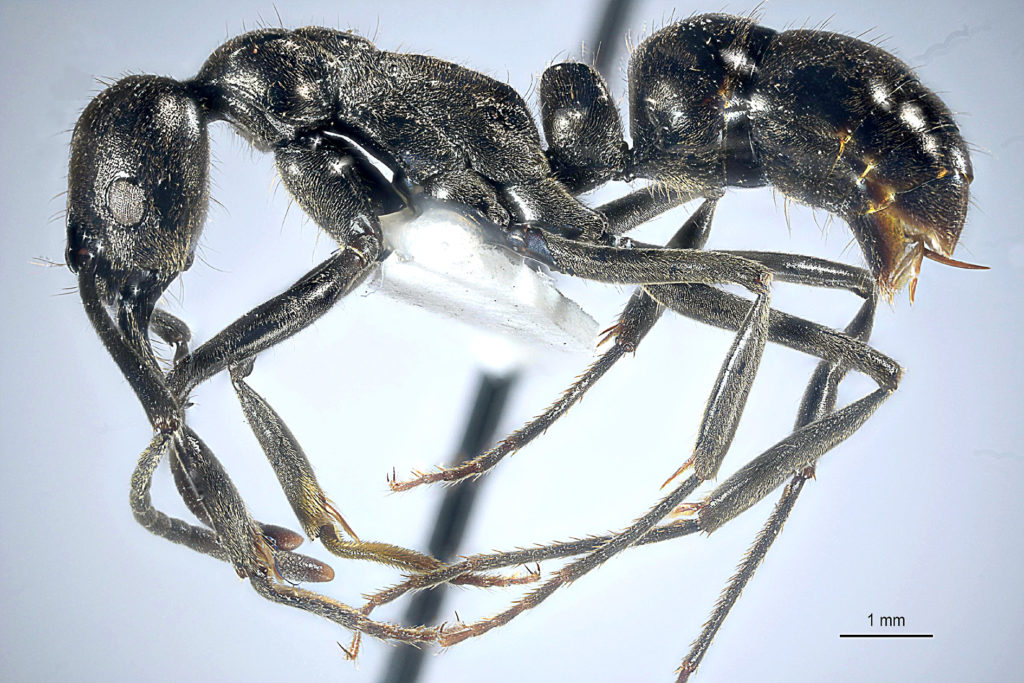
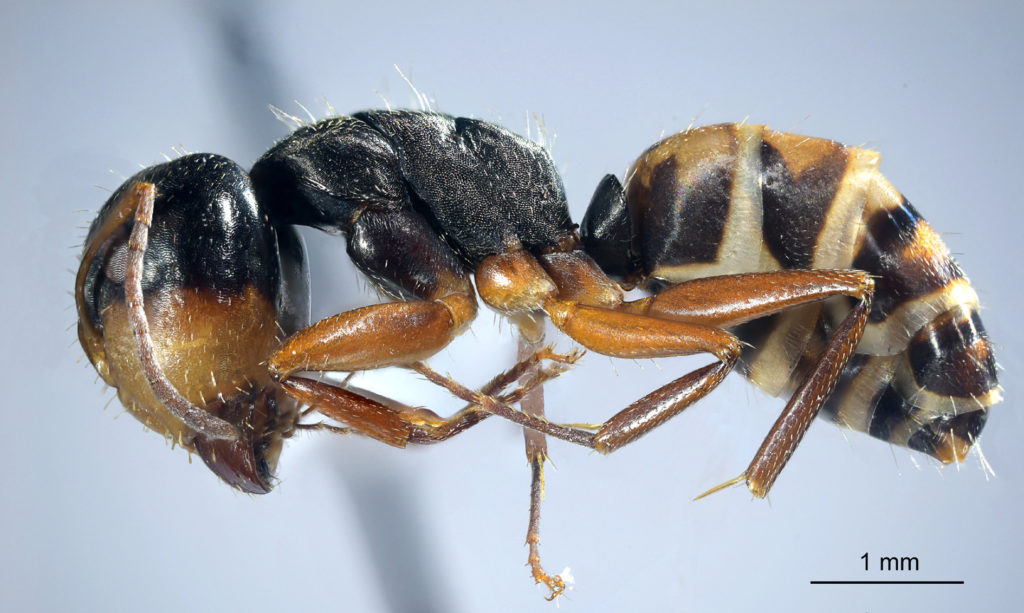
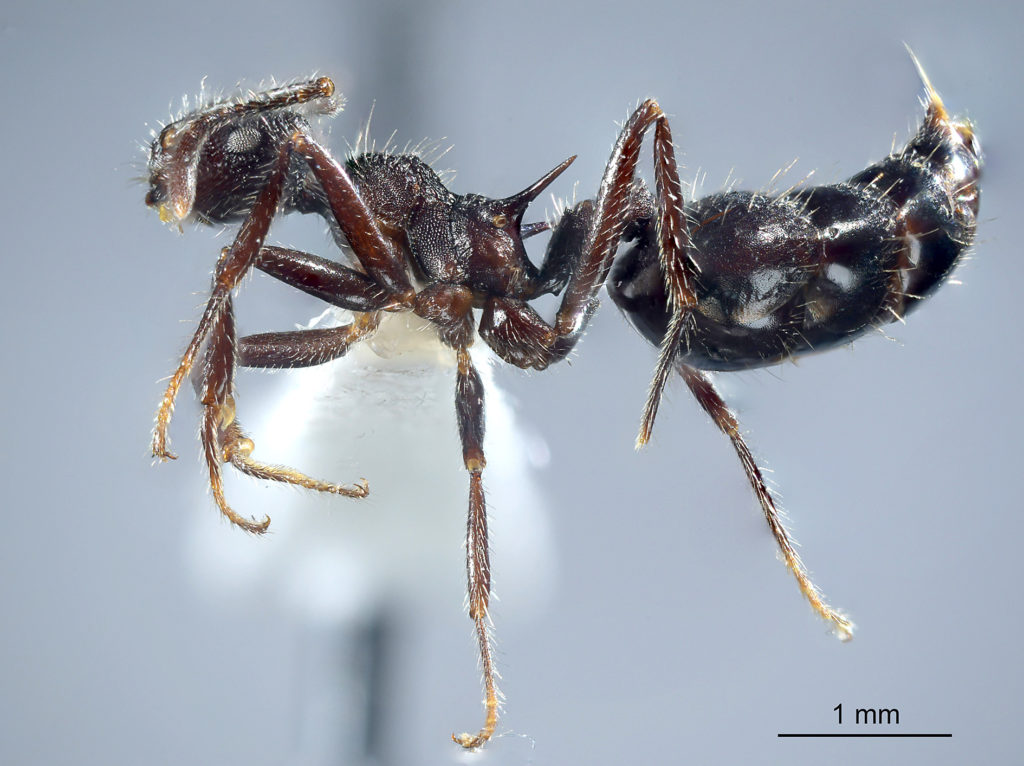

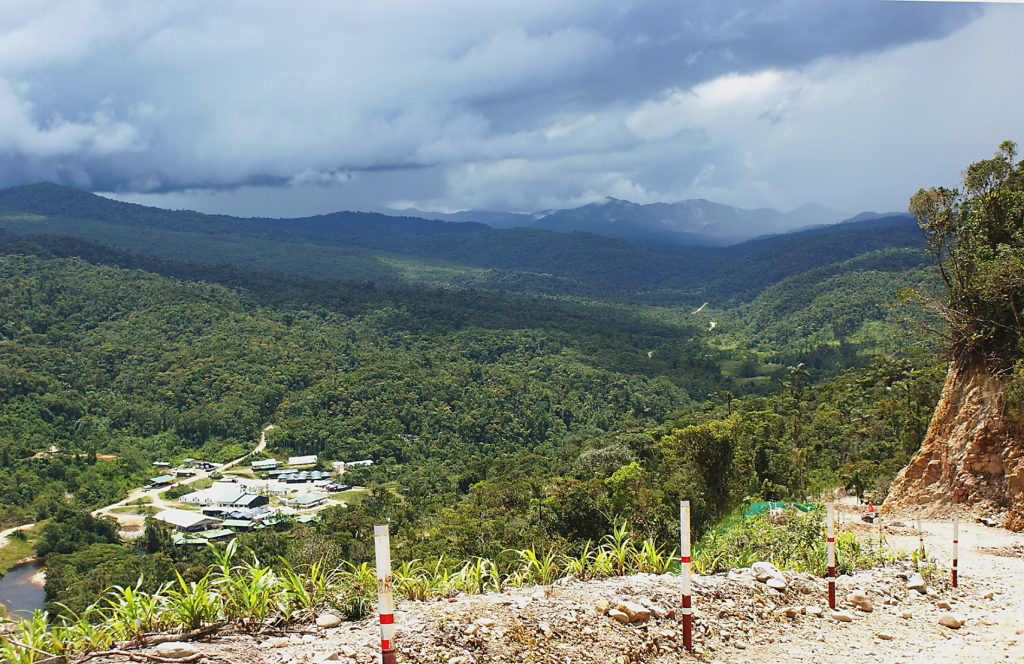
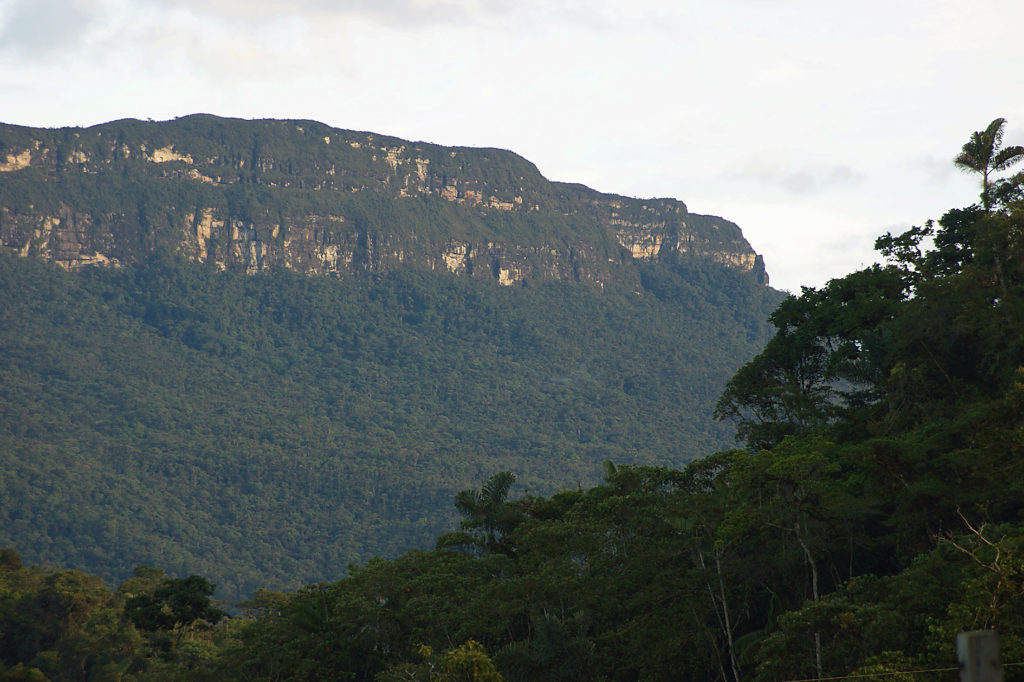
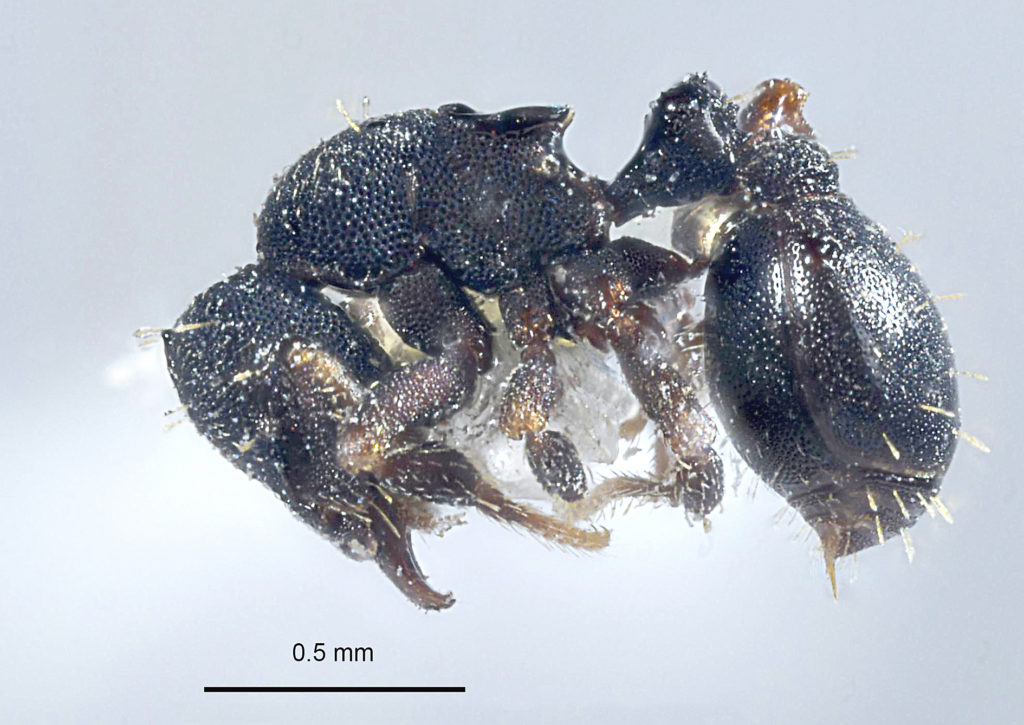
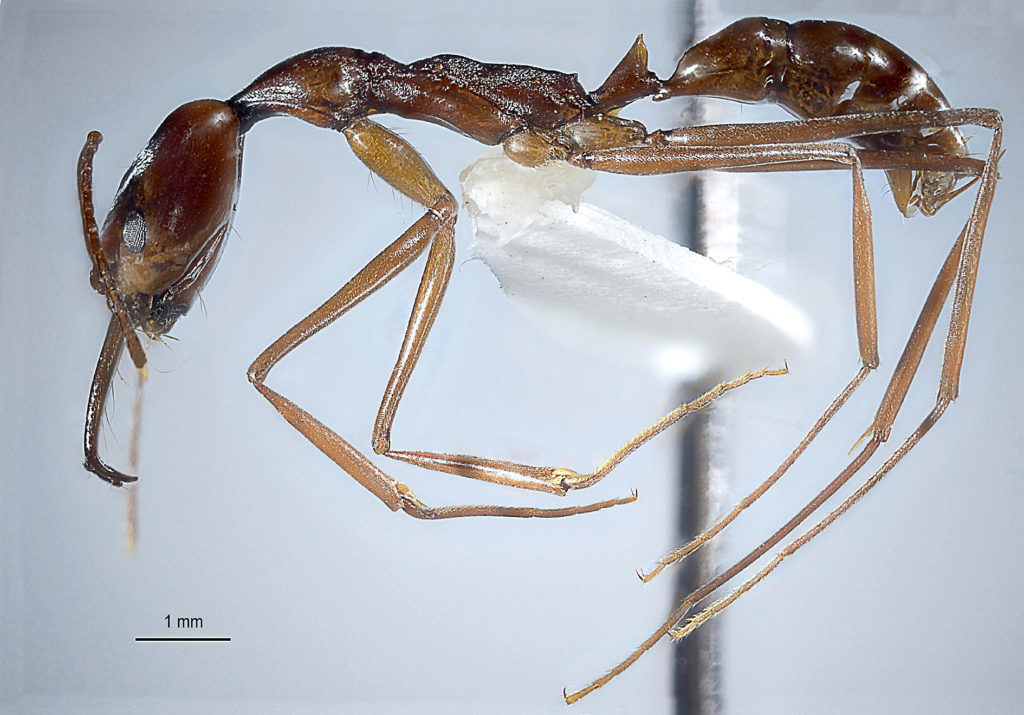

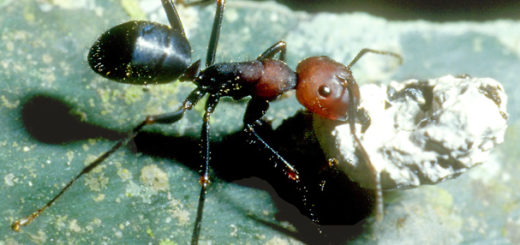
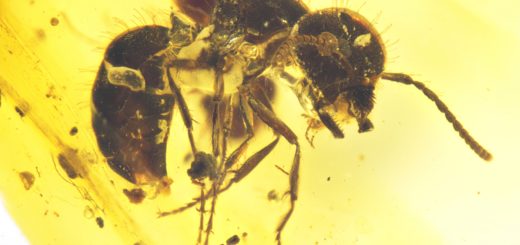
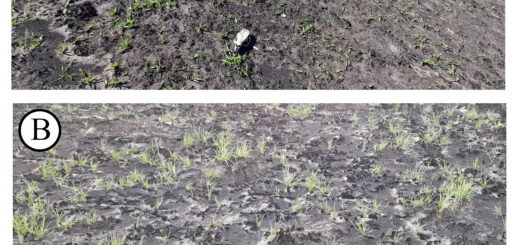
Recent Comments